user design
Watch It
Using design methods to support problem solving and decision making, we built a proof-of-concept prototype of a product to assist first responders in situations of physical or emotional distress. To support our work we used various research methods, visual and interaction design skills, methodologies for evaluating designs, and techniques for communicating our designs.
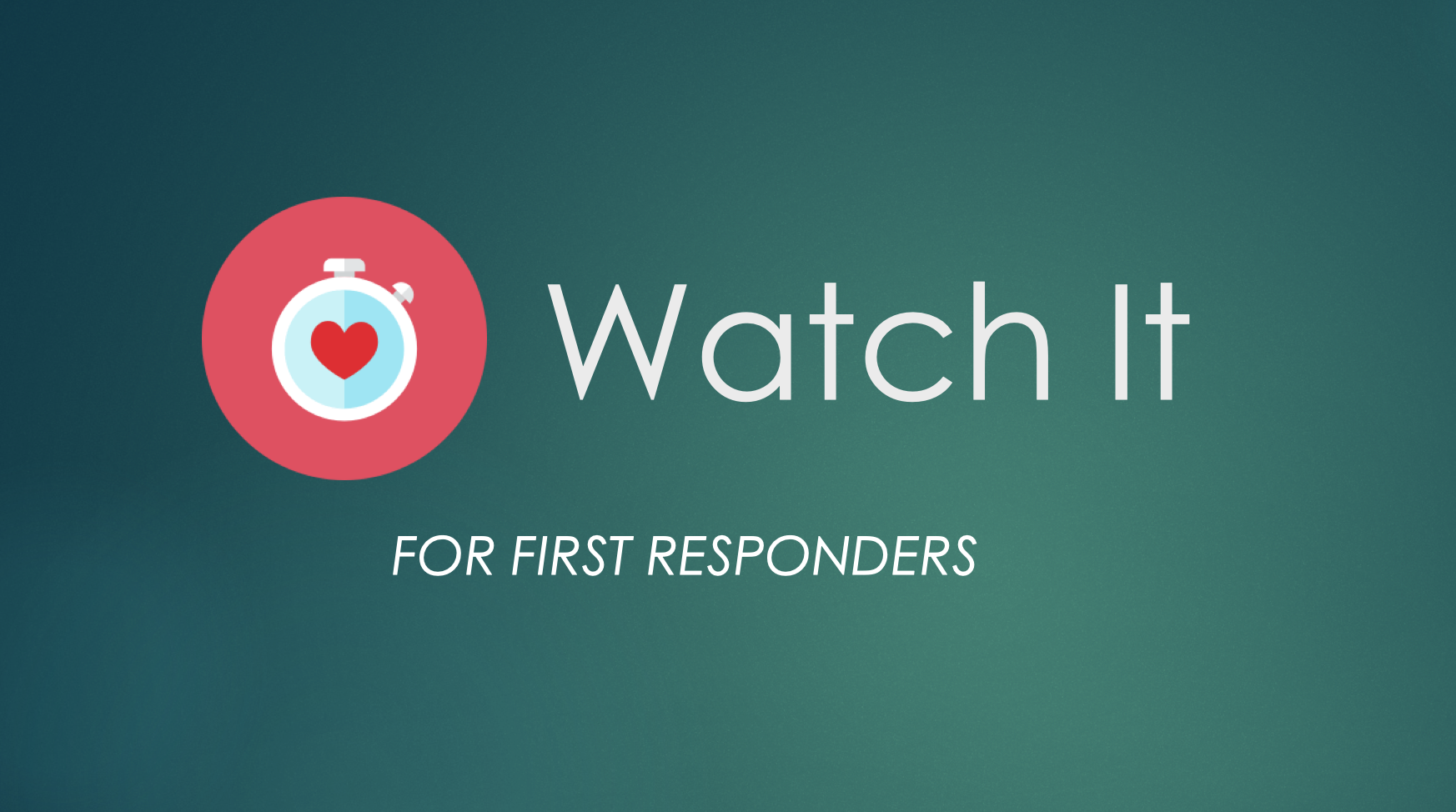
Project Process
01. Challenge
Working in a team of 3 designers, we were given the challenge of designing for disaster. Our group was given the problem space of designing for first responders. We needed to iterate on ideas for intervening in that design space that will address a specific problem.
During the middle of our design process, we were hit with a curveball in the form of a design constraint. Out of the multiple different types of design constraints, our team was randomly given the constraint of having first responders down. This presented another challenge that we had to overcome.
02. Design Space
First responders are monumental in the protection and recovery of communities when disasters strike. Some elements of the system revolving around first responders are their funding, training, facility, department, team, diet, mental health, family, and themselves. These parts are interconnected through disasters such as fire, crime, or car accidents. Sadly, this flow is powered by all the dangers in our society that pose a threat to innocent lives.
03. Contextual Inquiry Interviews
We conducted contextual inquiry interviews with individuals within our design space of first responders. We observed and interviewed a police officer and a lifeguard as they performed an activity or task related to our problem space of protecting the community.
Officer Dahmar Wartt-Smiles
Findings:
- Work-life imbalance
- Stress due to nature of work
- No coping mechanisms in place = vastly negative effects
- Counseling resources are readily available but they must reach out
Lifeguard Dylan Dang
Findings:
- Anxiety from the responsibilities put on their shoulders
- Exhaustion from constantly being alert
- Stress from tragic situations
- Counseling resources are not readily available
Through our contextual inquiries, we were able to immerse ourselves in the work environments of our targeted users of first responders. We used what we learned about their difficulties to identify ways in which we can intervene in that space with a product idea.
A detailed report of our contextual inquiry interviews can be found within our design specifications document.
04. Identifying Problem Space Through User Research
Through our user research, we have discovered numerous studies that highlight the importance of managing mental health as first responders. Here are our main takeaways:
- Higher risk of being exposed to constant trauma due to near death experiences, proximity to distressed civilians, or casualties.
- Strain on their personal relationships since their line of work is dangerous and demanding.
- If the mental or physical health of a first responder is poor, they are putting those they are helping at risk by making poor decisions.
Below is a system diagram of the relationships between what a first responder does and how the events that can occur while they are on the job can affect their well-being:
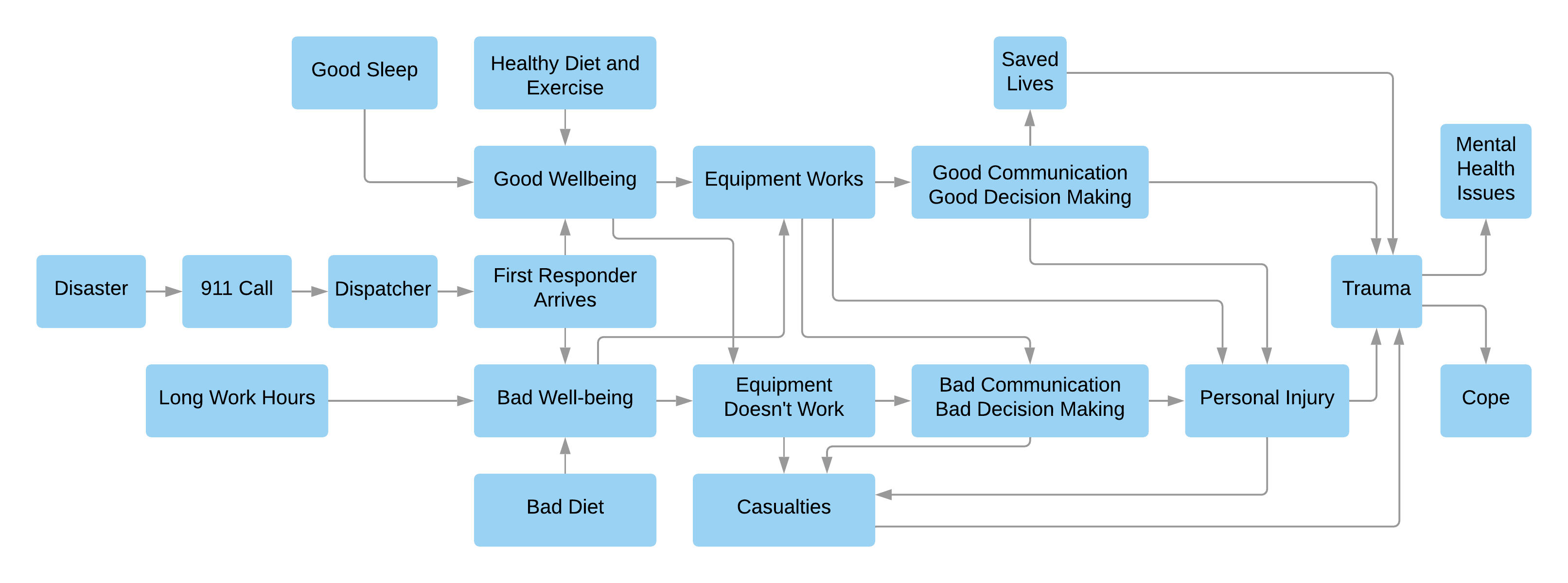
05. Design Intervention Ideation
From the system diagram above, we looked at situations where we could intervene with a product designed to address the specific problem of first responders' well-being. Areas highlighted in green shows the events where our product will intervene on the first responder system:
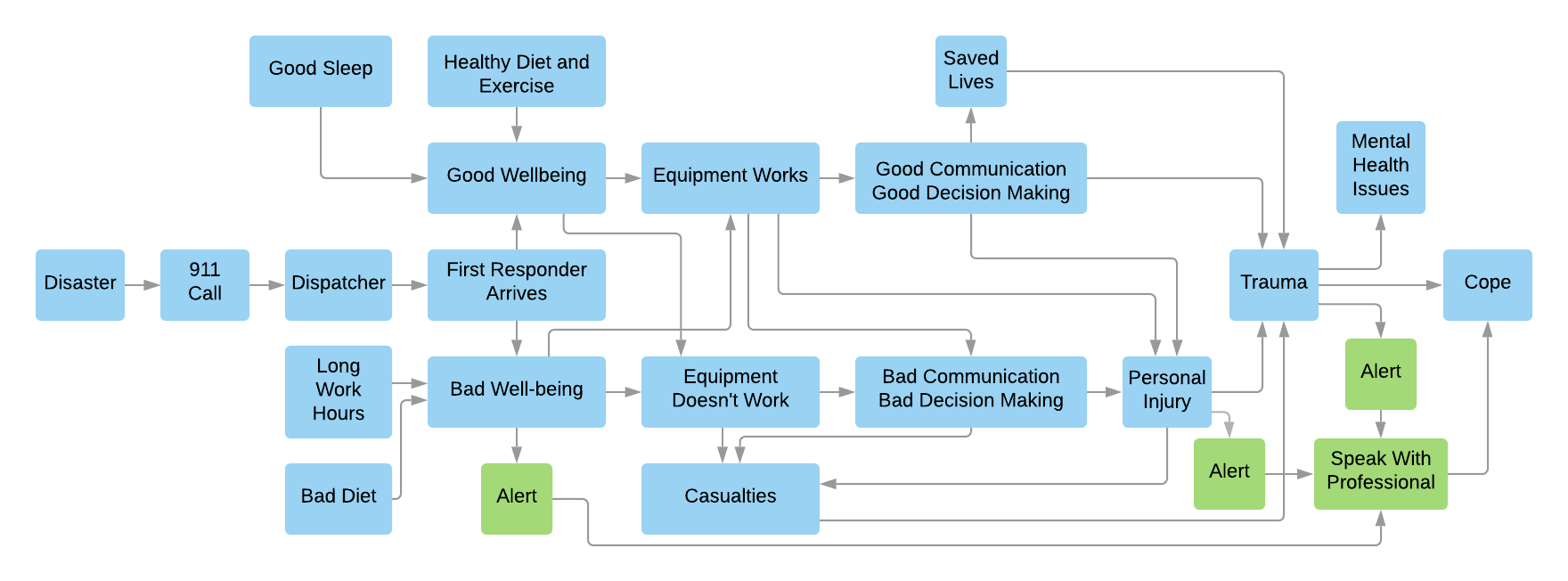
We brainstormed two biometric device ideas and wanted to pair it with software to display the collected data:
- Smartwatch
- Pros: Compact and ability to measure different vital signs.
- Cons: Incapable of measuring respiratory rate as of today.
- Vest
- Pros: Ability to measure different vital signs.
- Cons: Bulky and incapable of measuring blood pressure as of today.
- Software: Regardless of the prototype, we will need an interface to display the collected data from the devices. The interface allows first responders to view a history of their vital signs and communicate with doctors, colleagues, and family members. There will be a mood tracker feature that allows for an opportunity to write about their daily experiences.
Since we were not experts in biometric devices and sensors, we decided to reach out to a subject-matter expert. We got in touch with Matt Whitehill who works at the University of Washington's Ubiquitous Computing research lab. The lab develops sensing systems for real world applications in health, sustainability, and novel interactions. He helped us narrow down our decision with his expertise and we decided to go with the smartwatch idea due to its compactness and ability to measure 3 out of 4 vital signs.
06. Design Constraint
As mentioned previously, we were given a random design constraint having first responders down. This caused us to panic at first because our problem space revolves around the first responders themselves. However, we came to the idea of interpreting this constraint as having first responders down from physical or emotional distress and are in need of assistance. To accommodate this new constraint, we added additional features:
- Ability for friends and family to keep track of their first responders' well-being.
- Capability of notifying friends, family, or other first responders during situations where they are down physically.
- Send a distress signal by holding down a button for an extended period of time.
07. Watch Prototype
Low-Fidelity Sketches

Proof Of Concept Prototype
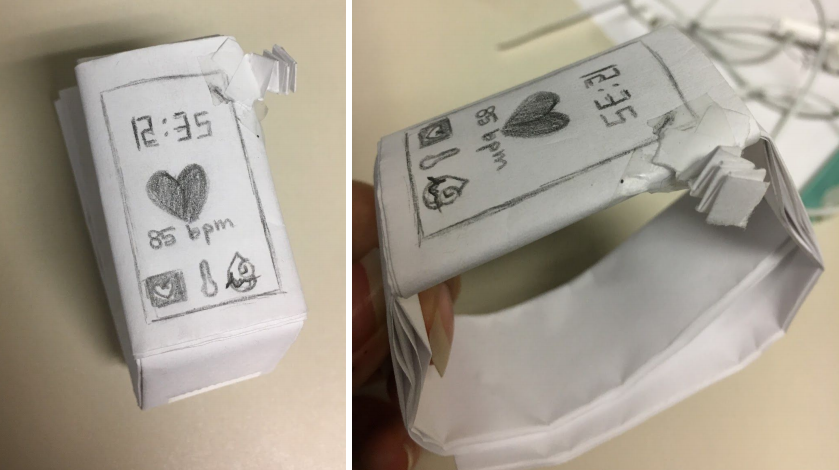
08. Software Prototype
Low-Fidelity Sketches
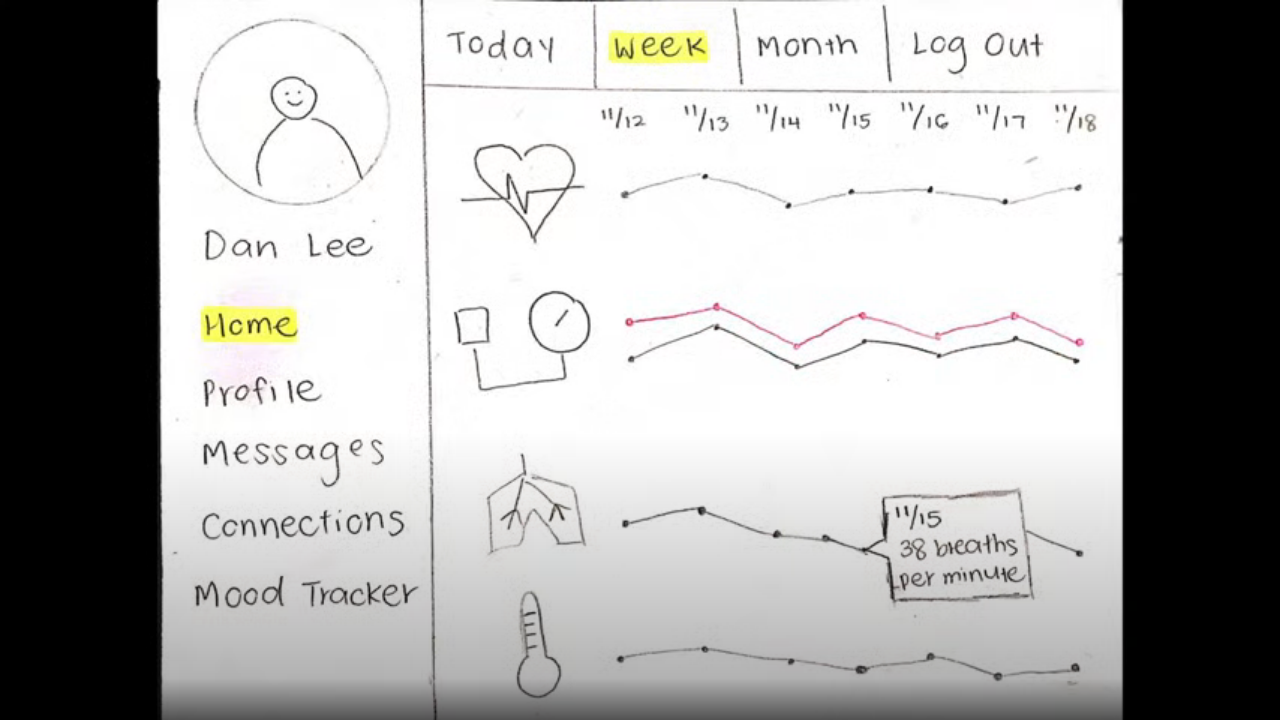
High-Fidelity Prototype
09. User Evaluation
To evaluate our biometric device and software, we conducted interviews and surveys. We felt that these qualitative methods would best help us in determining whether our product was feasible. We conducted a total of five interviews with different types of stakeholders and distributed our survey, asking questions about the biometric device design and user interface. We included pictures of our prototypes in the Google Form survey and made sure to ask open-ended, non-leading questions.
Findings:
- The face of the watch was intuitive since respondents easily listed the vital signs the watch measures.
- Respondents noted that the button on the side of the watch was ambiguous because there wasn’t a label on it.
- Software User Interface: Participants understood that the medical data of the biometric device could help stakeholders determine the health of a first responder.
- 95% of respondents said it was helpful and also expressed that they would consult doctors, family and friends if there was an abnormality shown in the data.
10. Outcomes
Completing this project strengthened my skills for conducting contextual inquiries, user evaluations, and prototyping. Towards the end of our project, we learned that while our design may be a good idea, it is still an active area of research and ahead of its time. Through user evaluation, we also realized that while nurses and first responders expressed interest in the design, it is not designed for the everyday wearer.
Even though we were faced with the design constraint of having first responders down within our problem space of first responders, we were able to come up with solutions by interpreting the constraint in a different light. Our interpretation of having first responders down from physical or emotional stress actually strengthened our design by narrowing down our problem space to create new targeted features.
In a future iteration of this project, we would like to do more research to track first responder mood. We learned that mental health is a difficult subject area to tackle and this project is only one tiny step in breaking down the stigma first responders have around well-being.
Feel free to take a look at the video below which conveys our design process, challenges, and ultimate successes!